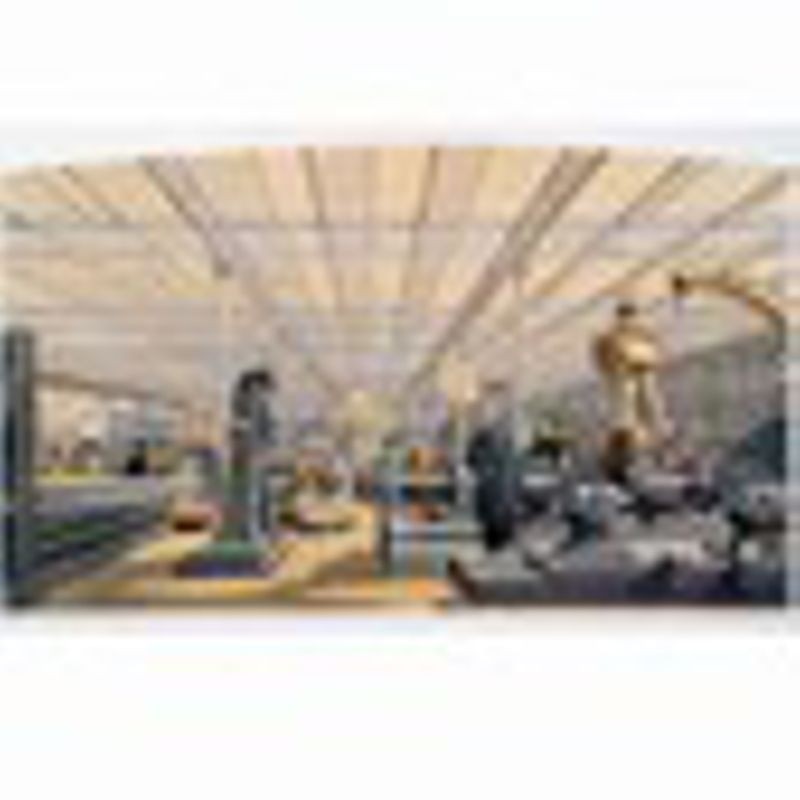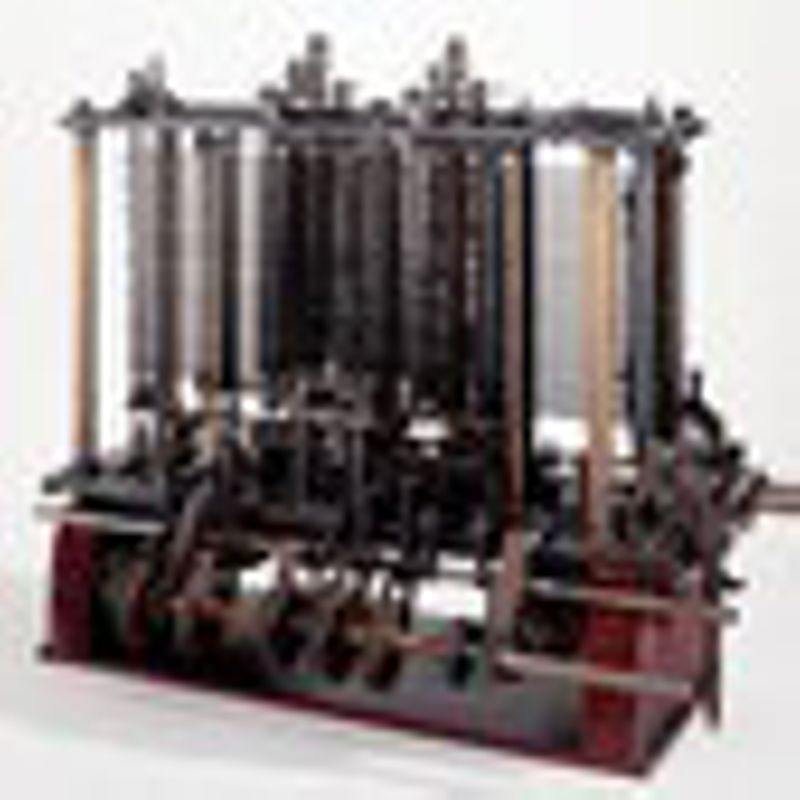A Brief History




The Age of Machinery
The middle decades of the 19th century were times of unprecedented engineering ambition. Engineering, transport, communications, architecture, science and manufacture were in a state of feverish change. Inventors and engineers exploited new materials and processes and there seemed no end to invention and innovation. Steam engines slowly replaced animals as a source of motive power. Iron ships began to compete with sail, railway networks rapidly expanded, and the electric telegraph began to revolutionize communications. Science, engineering, and flourishing new technologies held limitless promise.
Engineers, architects, mathematicians, astronomers, bankers, actuaries, journeymen, insurance brokers, statisticians, navigators - anyone with a need for calculation - relied on printed numerical tables for anything more than trivial calculations. Printed tables were calculated, copied, checked and typeset by hand. Humans are notoriously fallible and some feared that undetected errors were disasters in waiting.
Infallible Machines
In the 1821 vignette of Babbage and his friend, the astronomer, John Herschel, checking manually calculated tables, Babbage, finding error after error, was driven to exclaim 'I wish to God these calculations had been executed by steam'. The grindingly tedious labor of manually checking tables was one thing. Worse was their unreliability. Babbage embarked on an ambitious venture to design and build mechanical calculating engines - vast machines of unprecedented size and intricacy - to eliminate the risk of human error. The infallibility of machinery would eliminate the risk of error from calculation and transcription (copying the results). Automatic typesetting would banish the risk of error when manually setting results in loose type. Stereotyping - a process that automatically impressed results on soft material for the manufacture of printing plates - would eliminate errors in repeated printing. Special security devices would ensure the integrity of the results. The outcome would be flawless. This was the intention, but one that he failed to realize.
Difference Engine No. 1 - A Fateful Start
His first machine, Difference Engine No. 1, was designed to automatically calculate and tabulate mathematical functions called polynomials which have powerful general applications in mathematics and engineering. Babbage worked closely with Joseph Clement, a master toolmaker and draftsman who was tasked with making the parts. Difference Engine No. 1 called for 25,000 parts and would have weighed an estimated four tons.
Construction was abruptly halted in 1833 when Clement downed tools and fired his workmen following a dispute with Babbage over compensation for moving Clement's workshop closer to Babbage's house. The Engine was never built. Some 12,000 unused precision parts were later melted down for scrap. For the British Government that had bankrolled the venture, the project was a costly failure. When the final bills were paid the Treasury had spent £17,500 - the cost of twenty-two brand new steam locomotives from Robert Stephenson's factory in 1831 - a formidable sum.
The Finished Portion of the Unfinished Engine
A small demonstration assembly was built and delivered to Babbage by Clement in 1832. This 'beautiful fragment', one seventh of the calculating section, was all Babbage had to show after a decade of investment. Babbage used the piece to develop his ideas on computation and also for dramatic demonstrations to savants, guests, dignitaries, scientists, and friends. The device proved the soundness of the design and supported the feasibility of a full machine. It was the first successful automatic calculator and one of the finest examples of precision engineering of the time. It remains amongst the most celebrated icons in the prehistory of automatic computation.
The Analytical Engine
In 1834, with the Difference Engine project stalled, Babbage conceived of a new more ambitious machine, later called the Analytical Engine - a general-purpose programmable computing machine. The Analytical Engine was a quantum leap in logical conception and physical size, and its design ranks as one of the startling intellectual achievements of the century.
The Analytical Engine features many essential principles found in the modern digital computer and its conception marks the transition from mechanized arithmetic to fully-fledged general purpose computation. Had the Engine been built, it would have dwarfed even the vast Difference Engine and cranking it by hand would have been beyond the strongest operator. 'Calculating by steam' would have been more than a figure of speech. It is on the Analytical Engine that Babbage's standing as 'the first computer pioneer' largely rests.
Ada Lovelace
In 1833 Babbage met Ada Lovelace, daughter of the notorious British poet Lord Byron, at a party. Lovelace, just seventeen, had some mathematical training which was unusual for a woman at that time. She was entranced by the small working section of the machine and in time became an enthusiastic supporter of Babbage's work.
In 1843 Lovelace published an article by the Italian engineer Luigi Menabrea that she translated from French. In it she appended extensive notes of her own that ran to three times the length of the host article. The Notes included a description of the steps the engine would take in solving certain mathematical problems - procedures we would now call programs - the first published descriptions of the kind.
Lovelace speculated that the machine might go beyond numbers and more generally manipulate symbols in accordance with rules. She saw that numbers could represent entities other than quantity - letters of the alphabet, notes of music - and that by manipulating numbers, computing machines could extend their powers beyond the world of mathematics. In the light of developments in the 20th century, this notion is prophetic and one that Babbage appears not to have envisioned with any clarity.
The Second Difference Engine
As Babbage refined the mechanisms of the Analytical Engine he saw how he could simplify the design of the Difference Engine. Between 1847 and 1849 he designed a new engine, Difference Engine No. 2. The new design benefited from many of the techniques developed for the more demanding Analytical Engine.
The new design was elegant and efficient requiring one third the number of parts of Difference Engine No. 1 for greater computing power. With 8,000 parts, the Engine would weigh five tons and measure eleven feet long and seven feet high. Babbage made no attempt to construct the machine. It is this design that was finally built and completed in 2002, and is the first of Babbage's engine designs to be realized in its entirety.
Two Inspired Swedes
Others attempted to build difference engines in Babbage's time, all with dismal outcomes. Inspired by an account of Babbage's first engine, published in 1834, a Swedish father-and-son team, Georg and Edvard Scheutz, built a working prototype, completed in 1843. Two fully engineered versions in metal followed, the first in 1853 in Stockholm, the second in 1859 in London for the General Register Office.
Neither was much of a success. The hoped-for economies of automatic tabulation by machinery did not materialize. Worse still, the machine, made in London, lacked Babbage's security devices, tended to derangement, and required constant care. Both father and son died bankrupt. Building difference engines contributed to their ruin. The three engines now reside in museums, handsome testaments to dashed hopes and financial disaster.
Why Babbage Failed
Babbage failed to build a complete machine despite independent wealth, social position, government funding, a decade of design and development, and the best of British engineering. The reasons are still debated and the cocktail of considerations is a rich one. Babbage was a prickly character, highly principled, easily offended and given to virulent public criticism of those he took to be his enemies. Runaway costs, high precision, a disastrous dispute with his engineer, fitful financing, political instability, accusations of personal vendettas, delays, failing credibility and the cultural divide between pure and applied science, were all factors.
Babbage was also a rotten publicist. He disdained to lecture on his work and neither proclaimed nor promoted the mathematical potential of his engines. As a result the engines were judged largely on their practical utility to produce error-free tables, and experts of the day did not agree that there was any real need for new tables. Some argued that existing tables were already sufficiently accurate and that there was no economic justification for the large capital costs of building his huge machines. Others questioned whether the twenty, thirty and fifty figures of accuracy insisted upon by Babbage were justified when measurements could be made to no more than a few decimal places.
False Dawn
The 19th century movement to automate computation failed and the movement largely died with Babbage in 1871. There is no continuous line of development from Babbage to present times, and many of the principles embodied in his work were reinvented by the pioneers of the electronics era, largely in ignorance of his work. Though the legend of his work was never lost it was only in the 1970s that his designs were studied in any detail and the scale of his accomplishments emerged more clearly.


